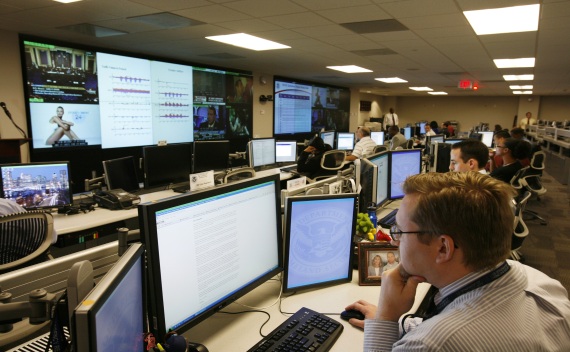You Might Have Missed: Assassination Plot, Drone Virus, and the Syrian Uprising
More on:

- United States Government Accountability Office, “Information Sharing: Progress Made and Challenges Remaining in Sharing Terrorism-Related Information,” October 12, 2011.
“Since January 2005, we have designated terrorism-related information sharing as high risk because the government continues to face serious challenges in analyzing key information and sharing it among federal, state, local, and other security partners in a timely, accurate, and useful way. We have since monitored federal efforts to implement the Information Sharing Environment (ISE)—a government-wide approach that facilitates the sharing of terrorism-related information, which may include any method deemed necessary and appropriate.”
- Leila Fadel, “Smuggled Libyan Weapons Flood Into Egypt,” The Washington Post, October 12, 2011.
“Gaddafi’s government had up to 20,000 of the missiles, according to U.S. estimates, and American authorities are working with Libya’s provisional government to track down what happened to them. Although thousands were thought to be destroyed in NATO bombing raids during the conflict this year, many missiles apparently were looted from unguarded warehouses in the chaos of the Libyan uprising.”“Just a few miles from the Gaza border in Rafah, a Bedouin arms dealer known as Abu Ahmed said that weapons smuggling has been easy since Egypt’s 18-day uprising and that the Libyan unrest next door has created a virtually open border… Shoulder-fired Stinger-like antiaircraft missiles also are available, he said, and their price has dropped from $10,000 to $4,000 because there are so many in the market.”
- Nada Bakri, “Sanctions Pose Growing Threat to Syria’s Assad,” The New York Times, October 10, 2011.
“Through nearly seven months of protests and a brutal crackdown that has killed more than 2,900 people, Mr. Assad and his political supporters have demonstrated a cohesiveness that has surprised even his critics.”(3PA: Note that based on United Nations estimates of civilian deaths, on current trends within six to 18 months there will be 3-12,000 more civilians killed in Syria.)
- Noah Shachtman, “Exclusive: Computer Virus Hits U.S. Drone Fleet,” Wired, October 7, 2011.
“Military network security specialists aren’t sure whether the virus and its so-called ’keylogger’ payload were introduced intentionally or by accident; it may be a common piece of malware that just happened to make its way into these sensitive networks. The specialists don’t know exactly how far the virus has spread. But they’re sure that the infection has hit both classified and unclassified machines at Creech. That raises the possibility, at least, that secret data may have been captured by the keylogger, and then transmitted over the public internet to someone outside the military chain of command.”
- James Dobbins, David Gompert, David Shlapak, and Andrew Scobell, “Conflict with China: Prospects, Consequences, and Strategies for Deterrence,” RAND Corporation, 2011.
“America’s capacity to ensure the defense of its friends and allies on China’s periphery will diminish over the next several decades. This can be offset by a U.S. willingness to employ horizontal and vertical escalation. China also has options in this regard, however. For the United States, a strategy based upon escalation and ultimately on deterrence by punishment means assuming greater risks in the future than in the past to achieve the same objectives. Some American interests in the region may not justify such increased risks. This suggests the need to supplement military deterrence with other forms of dissuasion, resistance, and persuasion.”
- Philip Taubman, “U.S. Officials Say F.B.I. is Hunting Terrorists Seeking to Kill President,” The New York Times, December 4, 1981.
“The Government has received detailed reports that five terrorists trained in Libya entered the United States last weekend with plans to assassinate President Reagan or other senior Administration officials, according to top Federal law-enforcement officials.”“These plans, intelligence and law-enforcement officials said today, include a plot to kill Mr. Reagan by shooting down Air Force One, the Presidential jet, with a surface-to-air missile, blowing up the President’s limousine with a rocket or attacking the President at close range with small arms. The informer, who is not an American but was otherwise not identified by these sources, also supplied the Government with detailed information about the infiltration of terrorists into the United States.”
(3PA: People interested in the story of Iranian-American Manssor Arbabsiar’s connection with an alleged Iran-directed plot to kill the Saudi ambassador to the United States might be interested in recalling the more fantastic supposed terrorist plot against President Reagan thirty years ago. The story of Libyan hit squads persisted, but the intelligence that supported it was never proven to be true.)
More on:
 Online Store
Online Store